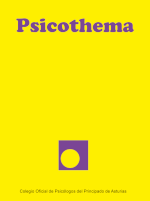Abstract
Background: Using the internet to search for information or share images about self-harm is an emerging risk among young people. The aims of this study were (a) to analyze the prevalence of different types of self-harm on the internet and differences by sex and age, and (b) to examine the relationship of self-harm on the internet with intrapersonal factors (i.e., depression and anxiety) and interpersonal factors (i.e., family cohesion and social resources). Method: The sample consisted of 1,877 adolescents (946 girls) between 12 and 17 years old (Mage = 13.41, SD = 1.25) who completed self-report measures. Results: Approximately 11% of the participants had been involved in some type of self-harm on the internet. The prevalence was significantly higher among girls than boys and among adolescents older than 15 years old. Depression and anxiety increased the risk of self-harm on the internet, whereas family cohesion decreased the probability of self-harm on the internet. Conclusions: Self-harm on the internet is a relatively widespread phenomenon among Spanish adolescents. Prevention programs should include emotional regulation, coping skills, and resilience to reduce engagement in this behavior..Downloads
Download data is not yet available.
